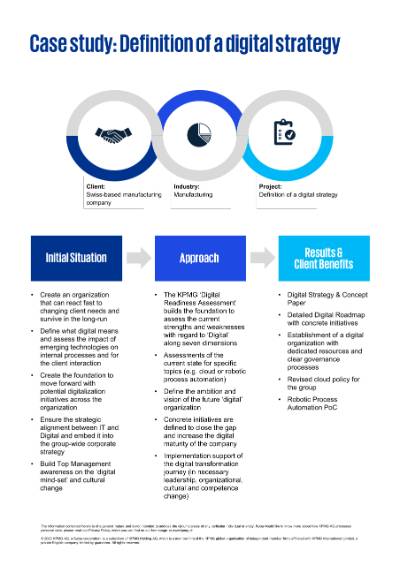Our KPMG Digital Transformation team supports clients with the entire IT life cycle from strategy creation to technology and supplier selection, contracting, designing target organizations and technology implementation.
KPMG has practice-based expertise and experience with large, medium-size and small organizations across all sectors and industries. The key objectives of our services are to improve the strategic value of IT investments in today's dynamic technology environment, to leverage the opportunities of digital transformation and to enable existing or new business models.
How we help companies
In order to help our clients in the best way, KPMG combines digital / IT knowledge with specific sector-knowledge (e.g. life science, industry, NGO), supported by a strong methodical knowledge base (e.g. frameworks, processes, templates). We collaborate closely with our clients and work in an iterative, agile way.
Our expertise
Credentials
Your key contacts
Meet the team
Learn more about our people and their daily work.








